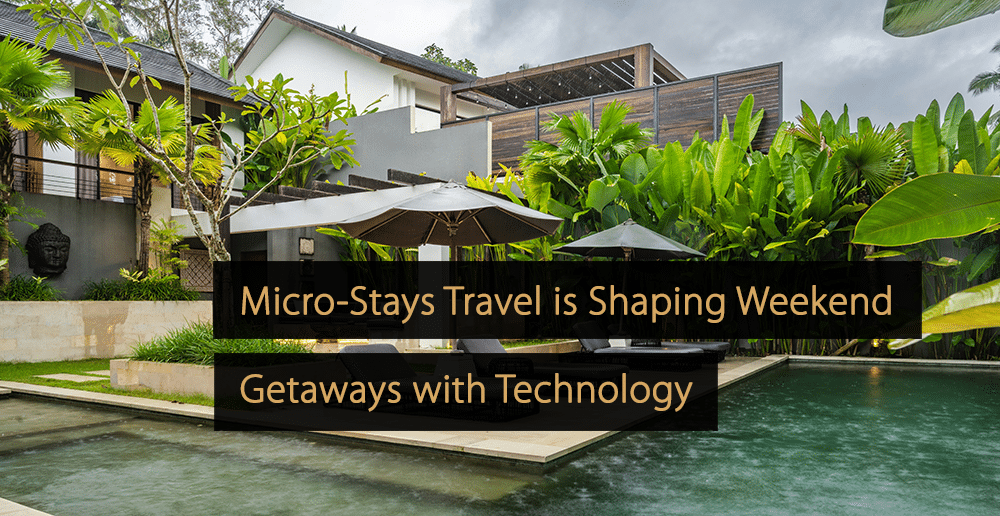Travel has changed a lot over the years. Instead of carefully planning week-long escapes months in advance, more people are choosing quick weekend getaways that fit into their busy schedules. These micro-stays resulted in a new kind of travel culture, and technology has made them remarkably simple to arrange.
In this article, you’ll learn how technology is reshaping weekend travel, why hotels are adapting to new demands, and what makes micro-stays so appealing.
How Tech Is Re-Shaping Weekend Travel
Whether it’s a spontaneous countryside getaway, a city break, or a weekend cruise, you can still get a maximum amount of enjoyment in a short space of time.
Booking platforms like Airbnb, Booking.com, and Expedia remove the stress of last-minute planning, while railway and ride-sharing apps make it easier to get from point A to B. Even payments are easier thanks to digital wallets and contactless systems.
Artificial intelligence has taken convenience even further. Simply add a few prompts about your budget, preferences, availability, and even past trips, and you get a custom itinerary in a matter of seconds.
Hotels Are Getting Smarter
The hospitality industry has noticed this trend and adapted quickly. Traditional models with rigid check-in times and minimum night requirements no longer work for weekend travelers.
So, more properties now offer hourly rates, single-night packages, and adaptable schedules. Contactless check-ins via mobile apps also mean there’s no more waiting in line in lobbies. Guests simply unlock their rooms with a tap of their phones.
Technology integration extends throughout the guest experience. Instant concierge support, automated climate control, and entertainment systems that sync with your device are now becoming common features within rooms.
Hotel options are expanding, too. Capsule hotels and pod rentals are a hit among budget-conscious travelers, while boutique lodges are leaning into “experience-first” stays that maximize every hour.
Social Media As the New Travel Guide
Social media is playing a big role in the rise of micro-stays.
Platforms like TikTok and Instagram are filled with short videos and posts about destinations, restaurants, and hidden gems. These quick glimpses spark excitement and make people want to visit, even if just for a night or two.
This new culture of sharing has amplified the FOMO effect in a big way. And this, paired with an increase in micro-influencers, is making destinations feel more authentic and accessible.
It’s why someone in New York might book a quick weekend away in Boston just a day or even hours after scrolling through travel content.
Why Micro-Stays Work for Everyone
Mico-stays are certainly convenient, but there’s a lot more to them.
For one, these short getaways provide travelers with an affordable way to recharge, without having to use up precious vacation days. It’s one of the easiest ways to get away more often throughout the year.
Local economies benefit, too. Instead of waiting for peak season to roll around, destinations get a steady stream of income from weekend visitors. Shorter, more frequent trips can also spread tourism out geographically and draw attention to lesser-known towns that often get overlooked.
If you’re one of the many people who struggle to find time to take a vacation, micro-stays could be the break you’re looking for. Plus, with the help of AI and a few convenient apps, there’s really no need to spend weeks trying to coordinate a trip. Now you can be exploring a new city within hours of deciding to go.
More Tips to Grow Your Business
Revfine.com is the leading knowledge platform for the hospitality and travel industry. Professionals use our insights, strategies, and actionable tips to get inspired, optimize revenue, innovate processes, and improve customer experience.Explore expert advice on management, marketing, revenue management, operations, software, and technology in our dedicated Hotel, Hospitality, and Travel & Tourism categories.







Leave A Comment